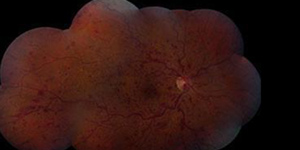Central Retinal Vein Occlusion (CRVO) Specialist
Common questions asked by patients: What is the cause of CRVO? Is a CRVO a stroke? How serious is CRVO? Can vision be restored after CRVO?
Contact us for more information. We serve patients from Hamden CT, Norwalk CT, Trumbull CT, New Haven CT, Madison CT, Fairfield CT, Stratford CT, Northford CT, Woodbridge CT, Stamford CT, Weston CT, Bridgeport CT, Milford CT, North Haven Bridge CT, West Shore CT, Clinton CT, Guilford CT, and surrounding areas.




Central retinal vein occlusion is a condition in which the venous drainage system of the retina is blocked. The retinal artery supplies blood to the retina. The blood flows through the small arterioles and capillaries and finally leaves the retina through the central retinal vein. A blockage in the central retinal vein causes backpressure and leads to bleeding, leakage and/or decreased blood flow in the retina.
Central retinal vein occlusion can affect vision through a number of mechanisms. Poor blood flow (ischemia) through the center of the retina (macula) can severely decrease vision. Additionally, exudation and bleeding from the capillaries can cause swelling in the macula (macular edema) resulting in visual loss. Poor blood flow can also lead to development of abnormal new vessels (neovascularization) not only on the retina but also in the front part of the eye (rubeosis iridis). These new vessels can lead to development of bleeding in the eye (vitreous hemorrhage) and/or increased eye pressure (neovascular glaucoma). Rarely, scar tissue can form on the surface of the macula causing macular pucker formation. Another rare complication is the development of retinal detachment.
Are there different types of central vein occlusion?
Yes. Central retinal vein occlusion is divided into two types depending upon the degree of retinal blood flow; ischemic central vein occlusion and non-ischemic central vein occlusion. Non-ischemic central vein occlusion generally has good blood flow and a more favorable visual prognosis. However, 33% of patients with non-ischemic central retinal vein occlusion get worse with time and develop ischemic central retinal vein occlusion. This is why careful follow-up is recommended to detect these changes early.
Who is at risk of developing central retinal vein occlusion?
Central retinal vein occlusion most commonly occurs after age 50. Systemic hypertension, diabetes mellitus, smoking and open angle glaucoma are important risk factors for the development of central retinal vein occlusion. Blood clotting abnormalities are especially important in patients younger than age 50. Rarely, uveitis may lead to central retinal vein occlusion.
What is the risk to the other eye?
Almost 10% of patients with central retinal vein occlusion develop a central retinal vein occlusion or branch retinal vein occlusion in the other eye.
How is central retinal vein occlusion treated?
The diagnosis of central retinal vein occlusion can easily be made on clinical examination. However, in the first three to six months following central vein occlusion, significant retinal hemorrhages can make it difficult to predict the clinical course and visual outcome. In general, the better the vision is at the time of diagnosis, the better the visual prognosis. A fluorescein angiogram is usually performed and is helpful in determining whether the central retinal vein occlusion is ischemic or non-ischemic. Ocular coherence tomography (OCT) is also often performed to evaluate and quantitate the amount of macular edema. Laser treatment, in general, is not effective for macular edema from central retinal vein occlusion. However, it may be helpful in patients who are younger than 65 years of age. If abnormal new vessels (neovascularization) develop, laser treatment is indicated to cause regression of these abnormal vessels. For persistent vitreous hemorrhage, retinal detachment or macular pucker formation, surgery might be indicated.
Injection into the eye of a small amount of steroid (Intravitreal Kenalog) or anti-VEGF medications has been shown to reduce the macular edema of central vein occlusions, improve vision, and have become increasingly popular among retinal specialists. The effect is often temporary and repeat injections may need to be performed. Surgical techniques of repair are also being investigated. These two treatments are promising and may be used in combination.

Additional Treatments You May Like

Additional Treatments You May Like
- Macular Degeneration
- Scleral Buckling
- Uveitis
- Macular Edema
- Photodynamic Therapy (PDT)
- Degenerative Myopia
- Laser Photocoagulation
- Retinal Detachment
- Diabetic Retinopathy
- Lattice Degeneration
- Pneumatic Retinopexy
- OCT
- BRVO
- Inherited Retinal Disorders
- Macular Hole
- Flashes and Floaters
- Macular Pucker
- Angiography
- CRVO
- Cryotherapy
- Retinal Artery Occlusion
- Intravenous Fluorescein Angiogram
- Retinal Tear
- Vitrectomy
- AMD
- Intravitreal Injections
- Complications After Cataract Surgery
- CSCR
- Pars Plana Vitrectomy




